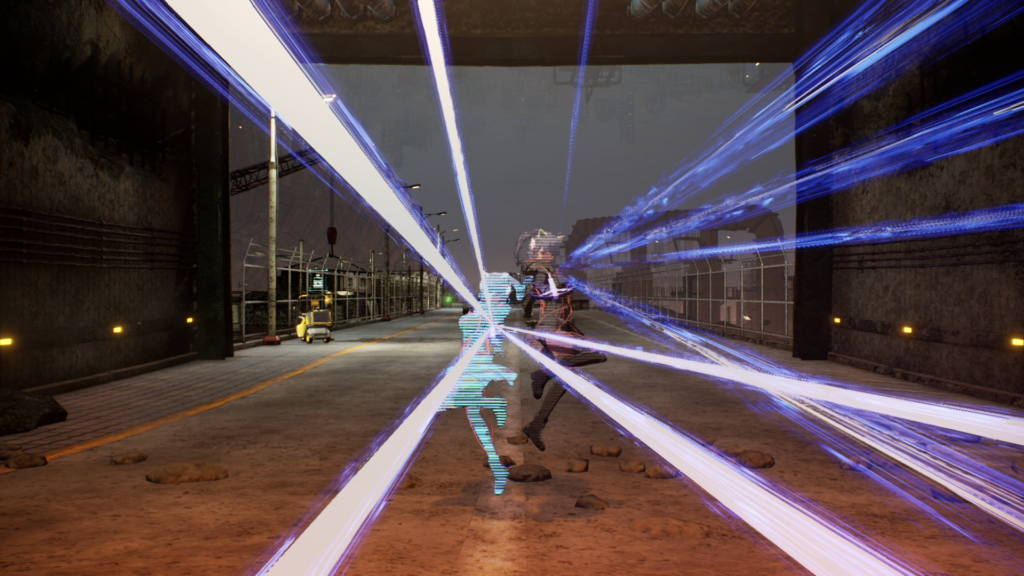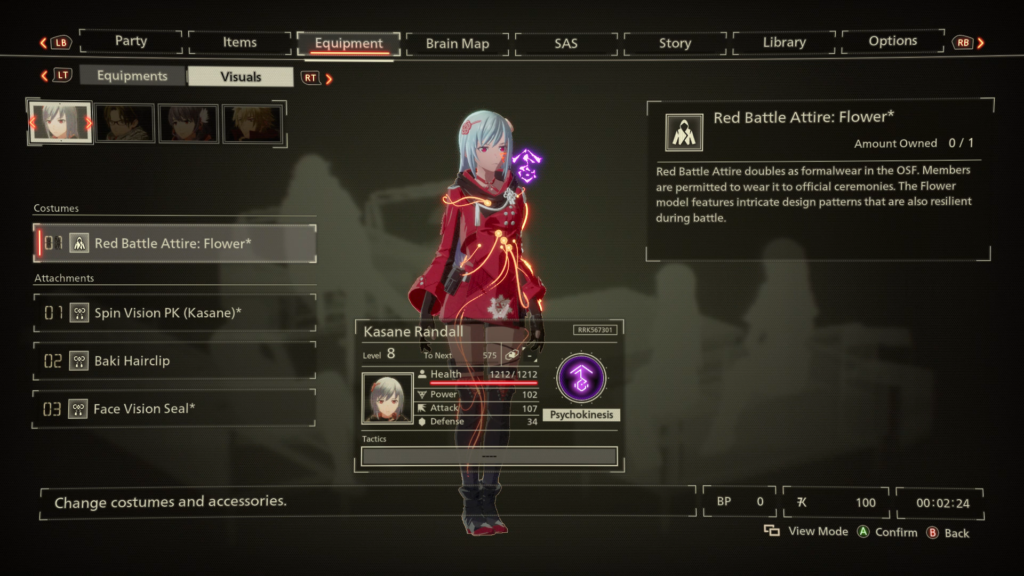Bandai Namco’s latest JRPG is unusually action-oriented for the genre, and shows the hallmarks of a potential cult-classic.
When it comes to Japanese RPGs – JRPGs as they are universally known – Bandai Namco has an impressive track record. Despite that, the company’s latest entrant in the JRPG stakes, Scarlet Nexus, is approaching its June 25 release with something of a lack of fanfare. After three hours of hands-on with a preview build, plus having played the tiny, recently released demo, we reckon it should have more of a buzz around it.
Sure, Scarlet Nexus has the anime-inspired visuals – graphically, it is beautiful — and uniquely Japanese vibe that we demand from JRPGs, but the moment you boot it up, it becomes apparent that it is far from the run of the JRPG mill. For starters, its action is very much real-time, as opposed to turn-based, and that action is unusually clever and distinctive.
Kasane or Yuito
The time-limited preview – streaming to a PC, as is the current necessity as far as previews are concerned — gave us a good look at the very start of the game (a tiny section of which, probably about half an hour in and including the tutorial, comprised the demo). At the start, we were given a choice of two characters to play as: Kasane Randall or Yuito Sumeragi.
We chose the former, and after the tutorial, were treated to some cute character back-story establishment which positioned Scarlet Nexus much more firmly in classic JRPG territory than the demo, which concentrates solely on action at the expense of any scene-setting outside of the odd comic book-style cut-scene.

At first, Kasane and her older sister Naomi were found wandering around the Tokyo-like city of New Himuka, gossiping, socialising and fretting about graduating from cadets to full-time members of an outfit called the OSF, which stands for Other Suppression Force. Scarlet Nexus takes place in an alternate reality in which the world – or at least New Himuka — is under constant invasion from mysterious beings called Others, and it’s up to the OSF to protect the general citizenry from their attacks.
To be accepted into the OSF proper, the sisters must be able to hook into the SAS machine, which connects the brains of each five-person team. Having passed that test, the sisters wander around town for a while, in time-honoured JRPG fashion, gossiping and meeting other OSF members, before being plunged unexpectedly into an encounter with some Others – a gentle test of the basic combat gameplay as revealed in the tutorial.
Psychokinetic gameplay
That encounter led to a proper outing as part of an OSF team, which provided the first real insight into Scarlet Nexus’s gameplay. Which, initially at least, impressed: it felt distinctive, fast-paced and fun, and was pretty impressive to behold thanks to some special moves delivered with over-the-top visual panache, as should always be the case for a JRPG.
The core gameplay – for both Kasane and Yuito, who have separate campaigns, but the game seems keen to encourage you to play as both as the campaign progresses – mixes physical attacks with psychokinetic ones. Which means you can pick up objects dotted around the map, and automatically hurl them at enemies.

The psychokinetic attack engine has a finite charge, so you often have to wait for it to come back on stream, but the key to inflicting large amounts of damage on enemies is to chain psychokinetic attacks with physical attacks. Timing is key – you can, for example, launch physical attacks from longer than normal distances when a psychokinetic attack is about to land, or add heft to a physical attack by adding a psychokinetic attack in the course of the physical one.
If you chain your attacks well enough, you can trigger a state called Brain Drive, which further enhances your attacks and movement. And as you start to encounter mini-bosses and bosses, and depending on your orientation within the battle arena as well as the positioning of your enemy, you can launch so-called special object psychokinetic attacks (using the left trigger rather than the conventional right one) which, for example, pull in things like bulldozers precariously perched above, and can stun enemies and destroy their armour, letting you and your fellow team members pile in for a short while. Special object attacks have timed, QTE-style finishing moves, given on-screen prompts, that maximise their damage.
Borrowing other powers
On top of all that, the SAS system lets you temporarily borrow the powers of your team members, which adds a strategic element to the battle system, and provides some differentiation between playing as Kasane or Yuito: the pair have team-mates with completely different powers. Thus, Kasane can temporarily acquire the powers Invisibility, Electrokinesis, Hypervelocity and Duplication, while Yuito gets to wield Pyrokinesis, Teleportation, Sclerokinesis and Clairvoyance.
Those borrowed powers specifically come in handy when facing certain types of Others. For example, Yuito will come up against some enemies which are invisible, but using Clairvoyance will allow him to see and target them. Kasane, meanwhile, battles a type of Other which hides in a metal cube; borrowing Invisibility allows her to sneak up to them when they pop out and knock them over so that they become vulnerable to attacks.

That battle system may sound complicated but in practice, you soon get used to it, and learn how to get the most out of it. At which point, it proves to be an absolute joy: fast, responsive and satisfying, especially if you manage to maximise your special object attacks; if enemies expose weak points, you can also use the special object attack to perform spectacular finishing moves.
Still a proper RPG
Anyone who played the demo version of Scarlet Nexus could be forgiven for thinking it’s more of an action game than an RPG, but even in that, you can detect classic RPG elements. Most notably the Brain Map – which is the skill tree. Spending Brain Points in that unlocks new attacks and perks, and enhances attributes – familiar stuff for any RPG fan. There are also countless objects to collect (green gel, for example, restores health), and it appears that Kasane and Yuito can acquire better weapons, although there weren’t any examples of those on offer in the demo or the preview.
Overall, Scarlet Nexus shows great promise, especially for those who love a good JRPG, and even for those who might normally be put off JRPGs due to turn-based battle systems. It marries JRPG sensibilities, in terms of both its graphics and its overall quirky vibe, with action gameplay which manages to feel fresh and original. It may not be arriving with much of a fanfare, but it has future cult-classic written all over it.

